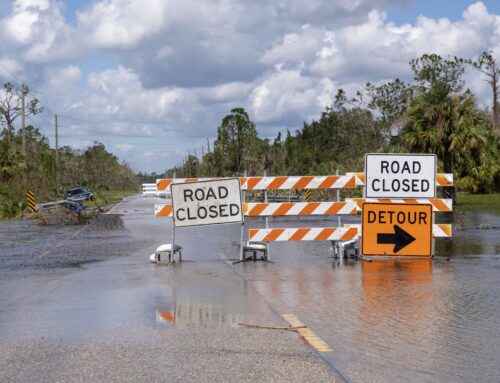As you dream about your summer vacation, imagine stopping at the bank on your way to the beach, taking out all of your money, and dumping it into the ocean. Sound crazy? Well, that's exactly what the Army Corps of Engineers does with millions of tax dollars every year under the federal beach renourishment program.
America’s beaches attract more than just sand crabs and surfers: they are also a magnet for the rich and famous. The American cultural elite have long flocked to the beach during the dog days of summer and increasingly, they have taken to buying beachside properties, building beachfront villas, and plastering up “No Trespassing” signs. At the same time that this building trend has intensified, America’s beaches have been doing what they always did – eroding and shifting. In an expensive exercise worthy of Sisyphus, these wealthy beach homeowners have convinced Congress that pumping sand on beaches to keep their poorly placed houses from floating away should be a federal responsibility.
The Army Corps renourishment efforts are both costly and ineffective. Though it continues to seek federal funds for beach restoration year after year, the Corps knows very well that these projects are bound to fail. The agency dredges sand from offshore locations and pumps it onshore to rebuild eroded areas. But, beach erosion is a continual process, and replenishment projects serve only to temporarily keep sand from washing back out to sea.
Today, from Florida to New York to California, Corps restoration projects are increasingly becoming the primary “soluti.png” to beach erosion – which is a problem only when buildings are built too close to the coastline and are at high risk for hurricane and storm damage. Beach rebuilding is now the fastest growing area of the Corps' work. In New Jersey, the Corps has spent hundreds of millions of dollars to dredge sand from the ocean floor and dump it on miles of coastline. Experts agree that virtually no beach replenishment program has lasted more than five years without costly rebuilding efforts – in New Jersey, most of the Corps’ work eroded within three years. In one case, more than half of a 350-foot wide beach all but washed away.
Beach lovers might argue that the replenishment program is necessary so Americans can continue to spend summer vacations at the beach. But who really benefits from beach restoration? Homeowners benefit from increased property values and communities benefit from increased property taxes and tourism. But, even though public access is the law on replenished shorelines and federal taxpayers have spent hundreds of millions on beach renourishment, some cities and towns are creatively blocking outsiders from using “their” beach.
Efforts by the Clinton and Bush Administration to reduce the federal beach building program have been met with fierce resistance by New Jersey and Florida lawmakers who are unwilling to give up millions in federal dollars. Both administrations argued that popular coastal areas can and should pay the majority of replenishment costs because they are the ones who benefit economically. The 2006 budget continues this trend by saying that repetitive renourishment of beaches should be a local responsibility. The Bush administration has requested only $46 million for these types of projects, less than half of what the Congress provided last year.
Taxpayers need to put a message in a bottle, and cast it down the Potomac to Capitol Hill: draw a line in the sand and stop sending our hard-earned tax dollars out to sea.











Get Social